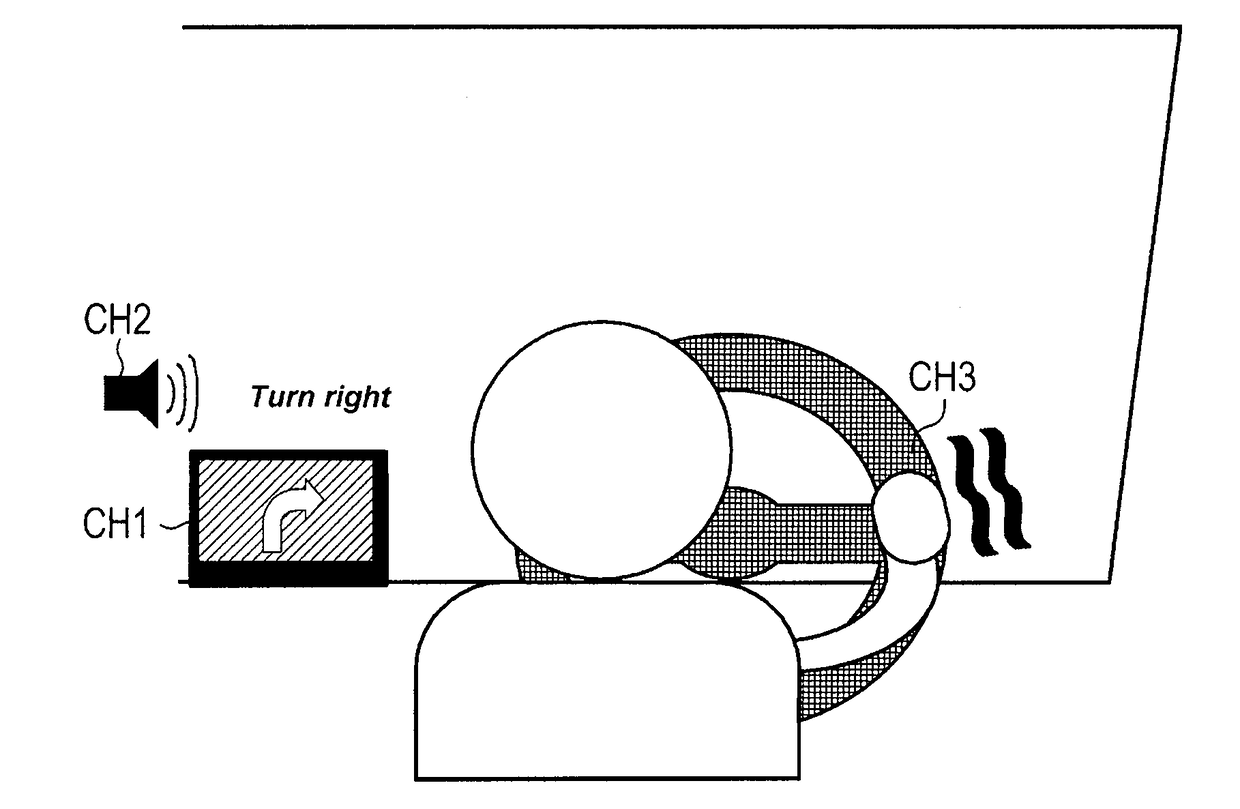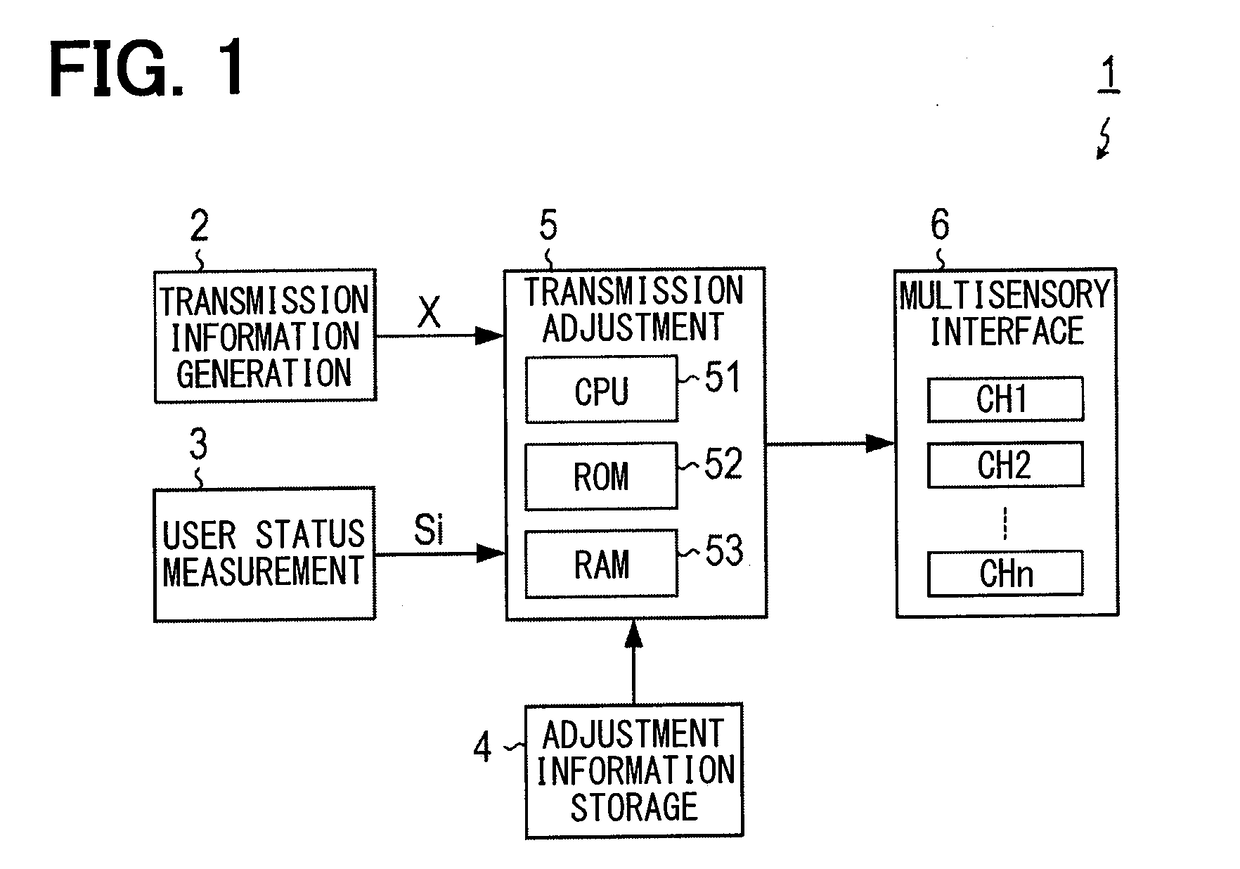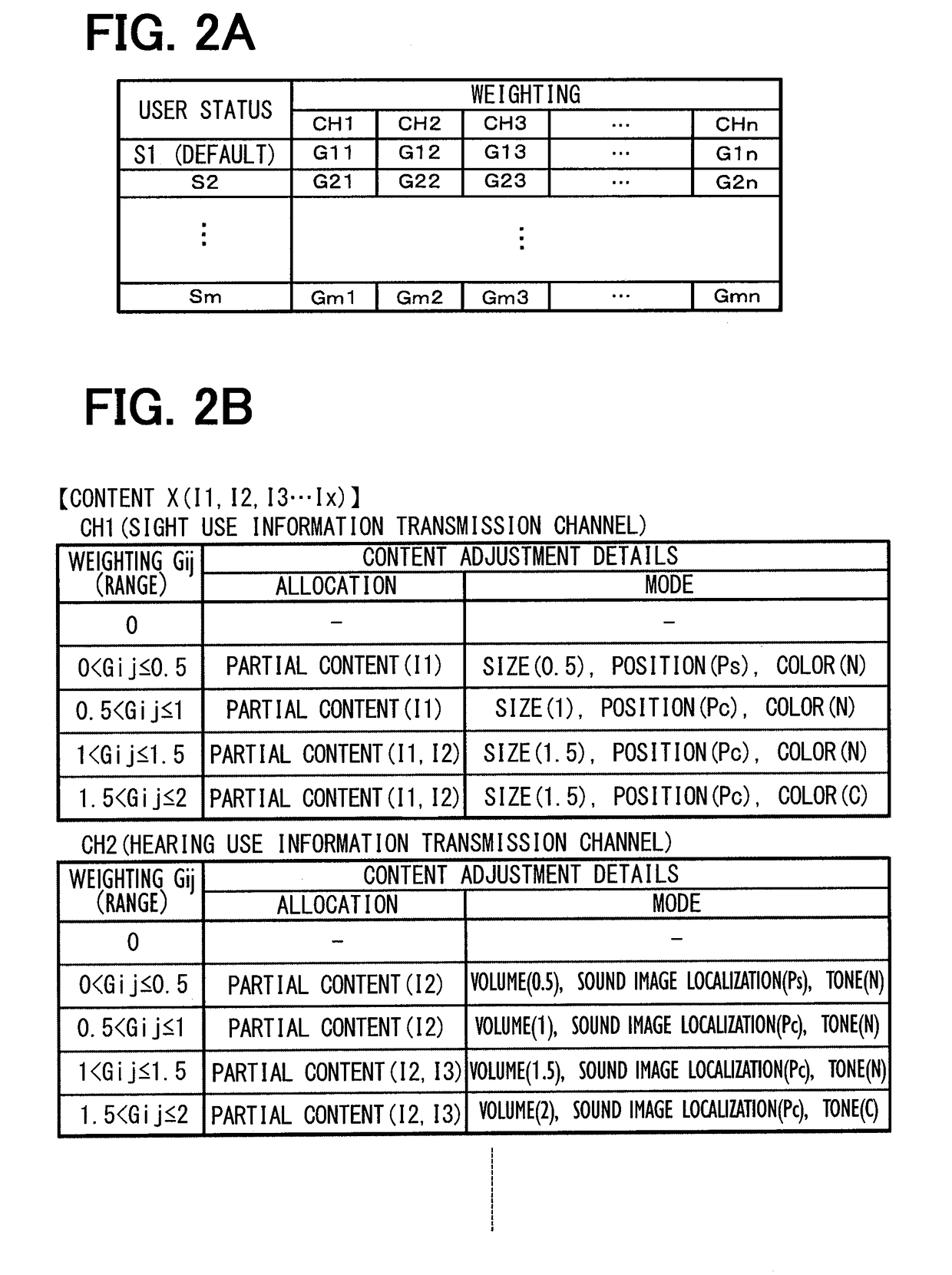Multisensory interface control method, multisensory interface control apparatus, and multisensory interface system
- Summary
- Abstract
- Description
- Claims
- Application Information
AI Technical Summary
Benefits of technology
Problems solved by technology
Method used
Image
Examples
first application example
[0064]Discussed herein is an example of the multisensory interface system 1 applied to a drive assistance system for a driver driving a vehicle.
[0065]Information transmission channels included in the present example are the first eyesight channel (CH1) configured by a display device for displaying navigation information, the hearing channel (CH2) configured by an acoustic device for providing voice guidance or the like, the touch channel (CH3) configured by a vibration device provided on a steering wheel, and the second eyesight channel (CH4) configured by a head-up display for displaying various types of information.
[0066]In the default user status, information (content) for driving assistance is presented to the driver by using the CH1, CH2, and CH3 as illustrated in FIG. 5. The figure shows a case of right turn navigation. When the user status changes to a status difficult to efficiently transmit information via voices, such as a case when the driver concentrates on something, th...
second application example
[0067]Discussed herein is an example which uses a display panel, such as a speedometer, as the first eyesight channel CH1 in the drive assistance system shown in the first application example.
[0068]As illustrated in FIG. 8, a display panel primarily displays a lot of sets of partial content such as a speedometer, a tachometer, a cooling water temperature meter, a fuel meter, and icons indicating various vehicle states. The display panel further displays image information corresponding to partial content for driving assistance, i.e., an image showing the presence of a pedestrian before the vehicle or the like in the present example. At the time of a change of the user (driver) status, it is conceivable that the partial content for driving assistance is emphasized by changing a display position, or omitting other partial content of a relatively low degree of importance as illustrated in FIG. 9, for example. In this case, information of the partial content omitted from the first eyesig...
third application example
[0069]Discussed herein is an example of the multisensory interface system 1 applied to a cooking assistance system.
[0070]Information transmission channels included in the present example are the eyesight channel CH1 configured by a spectacle-type display for displaying a point of interest, and the hearing channel CH2 configured by an acoustic device for amplifying sound generated during cooking and outputting the amplified sound.
[0071]As illustrated in FIG. 10, it is assumed that neither of the information transmission channels CH1 and CH2 is used in the default user status. When it is detected that the user status is a distracted attentional status, the eyesight channel CH1 is started to emphasize display of a point P to which attention should be paid (superimpose display indicating attention area) as illustrated in FIG. 11. When the user status subsequently changes to a status allowing most effective use of hearing, the hearing channel CH2 is started to generate sound of cooking (...
PUM
 Login to View More
Login to View More Abstract
Description
Claims
Application Information
 Login to View More
Login to View More - R&D
- Intellectual Property
- Life Sciences
- Materials
- Tech Scout
- Unparalleled Data Quality
- Higher Quality Content
- 60% Fewer Hallucinations
Browse by: Latest US Patents, China's latest patents, Technical Efficacy Thesaurus, Application Domain, Technology Topic, Popular Technical Reports.
© 2025 PatSnap. All rights reserved.Legal|Privacy policy|Modern Slavery Act Transparency Statement|Sitemap|About US| Contact US: help@patsnap.com



